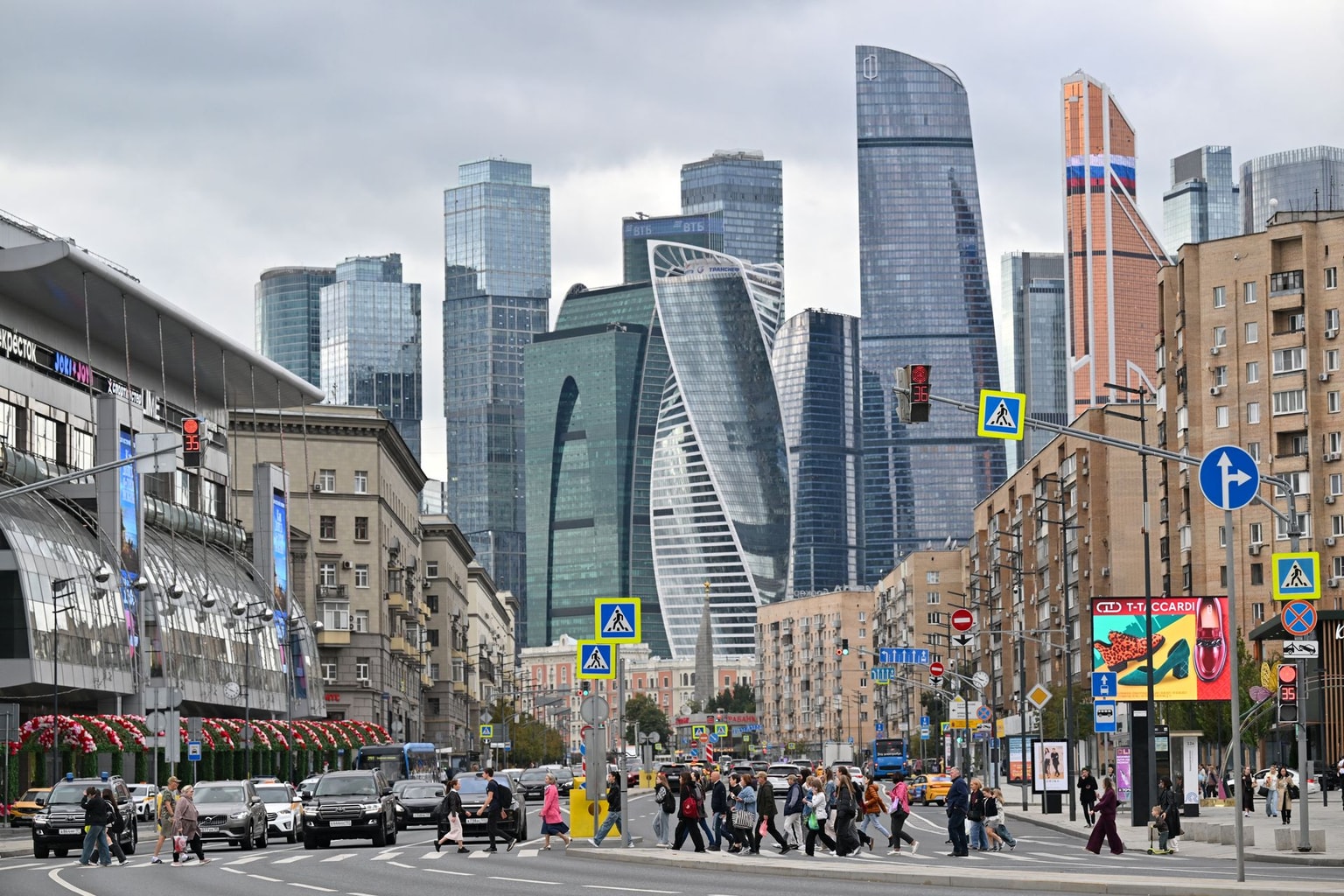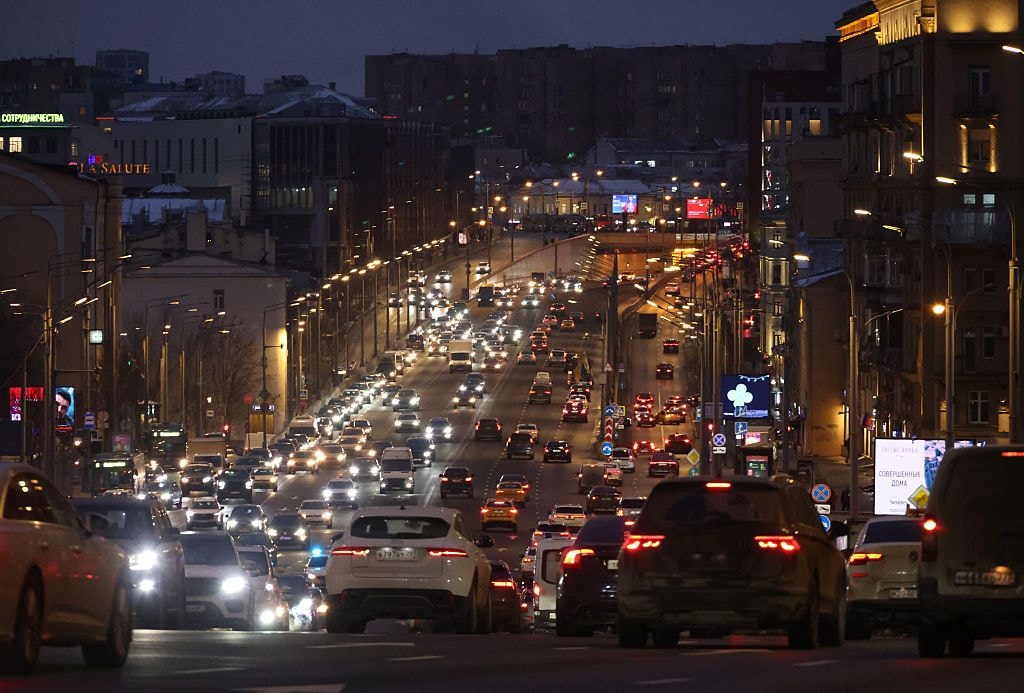
Why is Russia intensifying attacks on Ukraine’s Sumy Oblast?
Rescuers use high-rise equipment and special tools to search for people under the rubble of a five-story residential building destroyed by one of the Shahed drones launched by Russian troops to attack Sumy, northern Ukraine, on March 13, 2024. (Vyacheslav Madiyevskyy / Ukrinform/Future Publishing via Getty Images)
Russian attacks on Ukraine's northern Sumy Oblast have left some villages resembling the ruins of Bakhmut and Marinka, officials have said, as Moscow's forces continue to escalate aerial bombardments against homes and civilian infrastructure in the area.
In the latest strikes, one person was killed and another injured in Velyka Pysarivka, the local military administration said on March 17 in its evening update.
Last week, three people were killed and 12 were hospitalized when a Russian Shahed-type drone hit a five-story apartment building in the regional capital overnight on March 13.
Another attack on March 7 killed two people and injured 26, with six civilians hospitalized.
Yet, as harrowing as they are, the numbers of those killed and injured in recent weeks in Sumy Oblast don't do justice to the scale of the destruction currently being wrought by Russia's forces.
The unoccupied region on the Russian border but far from the actual front line has been the site of one the heaviest bombardments throughout Ukraine.
Intense attacks
Throughout March, Sumy Oblast has been reporting a steadily increasing number of Russian strikes.
On March 7, the regional military administration reported 32 attacks on 11 communities and some 233 explosions. On March 9, there were 45 attacks on 11 communities and around 222 explosions.
On March 15, there were 69 attacks on 14 communities, with at least 378 explosions reported in the region. On March 17, the regional military administration wrote: "The border areas have been leveled to the ground with Russian artillery shelling, causing people to hardly leave their basements."
"Up to 500 strikes can occur in a day. Some villages now resemble Mariinka and Bakhmut," the administration reported.
Russia had used nearly every weapon in its arsenal to hit the border region – over the past day, Ukrainian authorities reported 83 shellings, six missile strikes, 11 air strikes, and eight "salvos from anti-aircraft missiles."
According to the Sumy Regional Military Administration, in its March 18 attacks, Russia used mines, artillery and tank fire, aerial bombs including the advanced KAB variants, and even shot across the border with small arms.

No clear target
Sumy is hundreds of miles from the front lines, and Russia's attacks appear to be targeting civilian areas and civilian infrastructure.
A video released by Ukraine's National Police captured the devastation being inflicted on homes, shops, and other civilian buildings.
Vadym Mysnyk, a spokesman for the North Military Command, said on March 18: "(Attacks are being carried out on) civilian infrastructure, administrative buildings, critical infrastructure, and private homes."
"The Russians are also destroying bridges and roads, which makes it difficult to evacuate civilians from these settlements," Mysnyk added.
On March 14, drones and missiles targeted TV and communication infrastructure in the Sumy and neighboring Kharkiv oblasts, what the State Service of Special Communications and Information Protection said was part of Russia's "information warfare" aimed at limiting access to "truthful information and to share its own propaganda."
On March 17, some residents in Velyka Pysarivka were cut off from gas supplies due to damage from Russian attacks.
The incursions
The recent escalation of the attacks roughly coincided with the launch of last week's raids across the border into Russia by multiple pro-Ukrainian military units composed of Russian citizens.
"The number of strikes, airstrikes, and shelling has increased several times. This especially applies to the border areas, which are the epicenter of these battalions' activities,"
Dmytro Lantushenko, the 117th Territorial Defense Brigade spokesman, told Hromadske.
"I will say without exaggeration: since last week, Sumy Oblast is going through perhaps the most difficult time since April 2022, when the Russians left the region," he added.
"We understand that active hostilities are taking place there. Therefore, Sumy Oblast is the direction that is actively involved in the liberation of Russia today."
Ivan Kyrychevskyi of Defense Express also alleged the two events could be related, and the uptick in strikes in Velyka Pysarivka, in particular may have been an attempt to target the fighters.
However, he was cautious to draw any firm conclusions, adding Russia may "simply wanted to shell Sumy Oblast more because they have a sufficient number of aerial bombs for this."
There's also the simple matter of geography – Sumy Oblast borders Russia and, just like Kharkiv to the southeast, is in range of far more of Russia's weapons systems than cities such as Kyiv in more central areas that can only be hit by missiles and drones.

In the summer of last year, after Ukrainian forces liberated Sumy Oblast following a short-lived Russian occupation, a 5-kilometer exclusion zone along the border was established.
This is now clearly inadequate to protect Ukrainians from indiscriminate Russian attacks.
Evacuation
On March 15, Ukrainian authorities announced the mass evacuation of communities in the region, but ongoing attacks made such operations difficult and, at times, impossible.
Over 180 residents from areas adjacent to the Velyka Pysarivka community had been evacuated.
The town of Velyka Pysarivka, with a pre-war population of about 4,000, is located directly on the Ukraine-Russia border.
Authorities said some 4,500 residents, including 829 children, had been evacuated from 22 villages in Sumy Oblast but did not say over what time period this had occurred.
Mysnyk said on March 18: "Due to the density of shelling, it is impossible for evacuation groups to do this even without transport, on foot.
"Mostly elderly people remain in the villages, staying in basements. Whenever possible, we deliver food and necessary things there."












